Saturday 28 February 2015
Tuesday 30 December 2014
Oppo R5 With 4.85mm Thickness, 64-Bit Octa-Core SoC Launched at Rs. 29,990
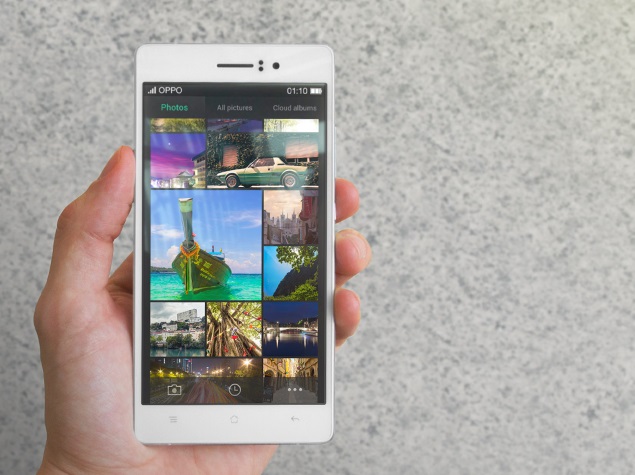
Oppo India, as expected to in December, on Tuesday launched its slimmest smartphone, the R5, in India at Rs. 29,990.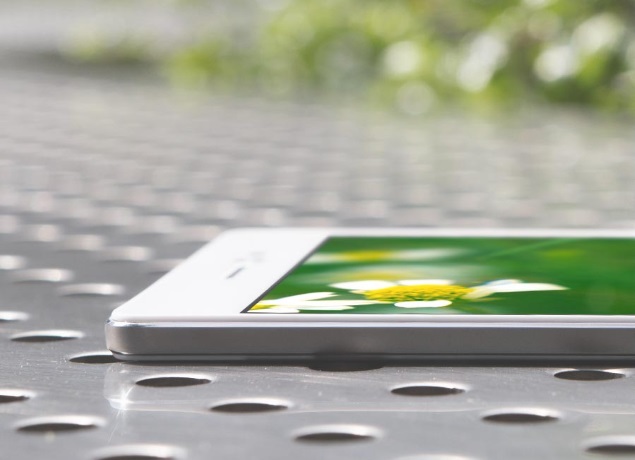
The company has announced that the smartphone will be available for pre-booking starting January 1, 2015.
At just 4.85mm thick, the Oppo R5 is the 'slimmest smartphone' launched in India. Notably, Vivo's flagship X5Max launched earlier this month is now currently the'slimmest smartphone' in the world with a thickness of 4.75mm.
The company back in October launched the Oppo R5 at $499. The smartphone features metallic and ceramic finishes at the corners.
The Oppo R5 features a 5.2-inch full-HD (1080x1920 pixels) AMOLED display that offers a pixel density of 423ppi. The R5 is powered by a 64-bit octa-core Qualcomm Snapdragon 615 (MSM8939) processor (2.1GHz quad-core + 1.5GHz quad-core) alongside with 2GB of RAM and Adreno 405.
It sports a 13-megapixel rear camera with Sony IMX214 sensor; an f/2.0 aperture, and a LED flash. There is a 5-megapixel front-facing camera also onboard. Running the company's proprietary ColorOS 2.0.1 (based on Android 4.4 KitKat), it supports a single Micro-SIM and comes with 16GB of inbuilt storage which is non-expandable.

There is 2000mAh battery onboard, and the smartphone supports VOOC charging technology that is said to charge the battery from 0 to 75 percent in around 30 minutes. Connectivity options on the smartphone include Wi-Fi, Bluetooth, GPRS/ EDGE, TD LTE, LTE FDD, and Micro-USB. Notably, there is no 3.5mm audio jack onboard, and customers will have to use the bundled Micro-USB to 3.5mm audio jack adapter, or the wireless O-Music accessory.
The Oppo R5 measures 148.9x74.5x4.85mm and weighs 155 grams.
Commenting on the launch, Tom Lu, CEO, Oppo India said, "This phone has been developed with the end user in mind. We used cutting edge manufacturing techniques to create a phone that fits perfectly into the users' hands, and that feels incredible. The frame has been forged nine times and then finished by hand to give a perfect sheen and feel. It has a quality that is not available anywhere else in the industry. The R5, like the rest of the R series delivers a truly stylish, exquisite and distinctive design and will continue to delight our customers with its innovative yet practical functions."
Display
5.50-inchProcessor
1.5GHzFront Camera
5-megapixelResolution
1080x1920 pixelsRAM
2GBOS
Android 4.4Storage
16GBRear Camera
13-megapixelBattery capacity
2000mAh
See full Oppo R5 specifications
Samsung to Stop Galaxy Alpha Production; Focus on Galaxy A Series: Report
 Galaxy Alpha early next year, and instead position the Galaxy A5 smartphone as its replacement.
Galaxy Alpha early next year, and instead position the Galaxy A5 smartphone as its replacement.
According to a report, with the launch of Galaxy A5 in South Korea - which can be as early as mid-January and as late as early February - Samsung will phase out production of the Galaxy Alpha once the current inventory of materials is exhausted for the smartphone, reported Korean publication ET News on Friday.
"I understand that the Galaxy Alpha will be produced until the materials currently in inventory are used up," said an industry insider cited by ET News, "Its production will end by early February next year."
To remind you, Samsung has according to multiple reports been facing production issues for its latest metal-clad Galaxy A series as well, resulting in their delayed launch. Notably, the Galaxy A7 handset that was much-leaked alongside the Galaxy A3 andGalaxy A5 has still not yet been announced - possibly another symptom of the yield issues.
"The casings did not meet the quality requirements Samsung was aiming for, and only around 50 percent of the yield came out right," noted an earlier report citing insider sources.
Earlier this month, Samsung started rolling out the Galaxy A3 and Galaxy A5 smartphones outside China.
The Galaxy A5 was spotted listed by various online retail sites and Samsung's online store in Russia at RUB 23,990 (approximately Rs. 27,350). Last month, the Galaxy A5 had gone on sale in China at CNY 2599 (approximately Rs. 26,000).
Specifications of the Samsung Galaxy A5 include a 5-inch HD (720x1280 pixels) Super Amoled display; 1.2GHz quad-core Snapdragon 410 processor; 2GB of RAM; 13-megapixel and 5-megapixel camera; 16GB built-in storage expandable via microSD card (up to 64GB), and Android 4.4.4 KitKat.
Lava Iris Fuel 60 Review: Great Battery, Good Value

It looks like all brands are now slowly waking up to the reality of battery-life issues with Android smartphones. We saw how Sony managed to squeeze life out of the batteries inside the Xperia Z3 Compact (Review | Pictures) and Xperia Z3 (Review | Pictures). And, by the virtue of its colossal 5000mAh battery, the Gionee Marathon M3 also managed to last longer than a lot of other smartphones in its price range. There was also the low-cost Intex Aqua Power we tested recently which had a 4000mAh battery and unsurprisingly - a stellar battery life.
Continuing this trend is the Lava Iris Fuel 60, the second phone in the 'Fuel' series after the Iris Fuel 50. Lava has fitted the phone with a 4000mAh battery, which may not be as big as the one inside the Marathon M3, but it is still big by any standards. We put the Iris Fuel 60 through a battery of tests to find out if it can last longer than your regular smartphone and not sacrifice on the performance at the same time.
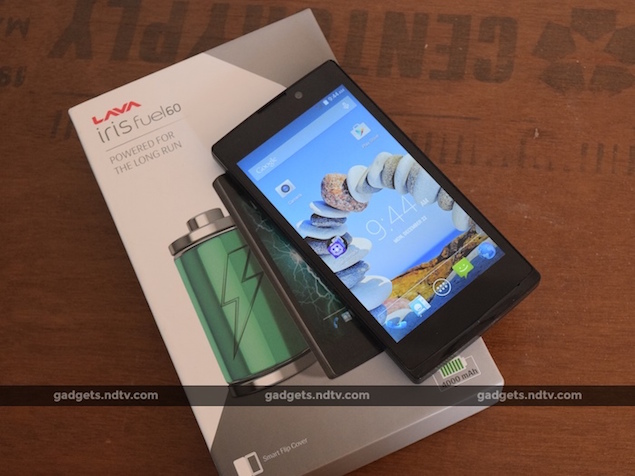
Look and feel
It isn't entirely surprising that the Lava Iris Fuel 60 is a chunky piece of hardware thanks largely to the battery inside the phone. The Iris Fuel 60 is thick at 10.2mm and also weighs a hefty 174g. While all this girth might put some people off, it actually makes it reassuring to hold and improves the overall ergonomics. Thanks to the soft matte rear, it also grips pretty tightly in one hand.
It isn't entirely surprising that the Lava Iris Fuel 60 is a chunky piece of hardware thanks largely to the battery inside the phone. The Iris Fuel 60 is thick at 10.2mm and also weighs a hefty 174g. While all this girth might put some people off, it actually makes it reassuring to hold and improves the overall ergonomics. Thanks to the soft matte rear, it also grips pretty tightly in one hand.
There are normal-sized bezels around the 5-inch screen on the front of the phone. However, the screen is slightly recessed and the edges are raised. While the raised edges may not really be an eye-sore visually, it becomes annoying to swipe across the screen for certain functions because the flow of the swipe is abruptly obstructed.
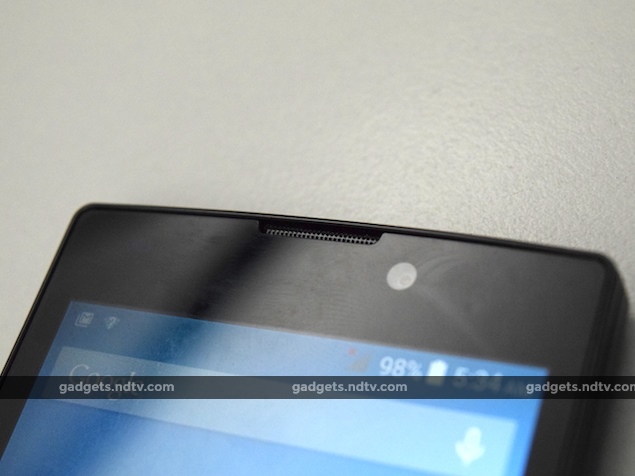
A row of backlit capacitive buttons below the screen can be used to navigate through the operating system. The front-facing camera and the earpiece lie above display. The power button and the volume rocker are on the right edge of the phone. These buttons are almost flush with the edges of the phone which makes blindly locating them a bit of a hassle. In fact, we ended up hitting the power button quite a few times when we wanted to lower the volume. Moreover, the tactile feedback of these buttons is not too great. The plastic cover on the rear can be removed off easily and feels flimsy. One can find the battery under this cover but it is non-removable. Underneath, there are also two slots for regular-sized SIM cards and a microSD card slot.
Specifications, software and camera
Sitting under the hood, apart from the battery of course, are a pretty standard set of hardware components. The phone runs on a 1.3GHz Mediatek MT6582 quad-core processor with a Mali-400 graphics processing chip. There is 1GB of RAM and 8GB of internal storage, of which around 3.63GB is available for apps and 2.49GB is available for users after taking into account the pre-installed apps. In case the storage space isn't enough, which is quite likely, one can increase it by up to 32GB using a microSD card. The phone also has support for USB On-the-Go but unlike the Marathon M3 it cannot charge other phones.
Sitting under the hood, apart from the battery of course, are a pretty standard set of hardware components. The phone runs on a 1.3GHz Mediatek MT6582 quad-core processor with a Mali-400 graphics processing chip. There is 1GB of RAM and 8GB of internal storage, of which around 3.63GB is available for apps and 2.49GB is available for users after taking into account the pre-installed apps. In case the storage space isn't enough, which is quite likely, one can increase it by up to 32GB using a microSD card. The phone also has support for USB On-the-Go but unlike the Marathon M3 it cannot charge other phones.
There is a 10-megapixel primary camera with flash and support for full-HD recording, and a 2-megapixel front-facing camera for selfies. With respect to the cellular connectivity, only one of the SIM cards can connect to a 3G network. The other connectivity options include Wi-Fi a/b/g/n and Bluetooth.
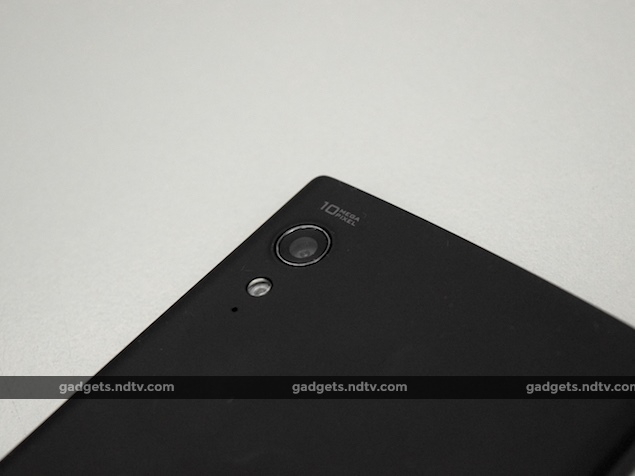
The 5-inch IPS display outputs a resolution of 720x1280, which translates to a pixel density of approximately 294ppi. Text and images look crisp on this screen and the colours are not too saturated either. The protective glass is rather reflective, as a result of which the visibility under direct sunlight takes a beating. That said, the viewing angles are pretty good.
As is with other Lava phones, Iris Fuel 60 uses almost stock Android 4.4.2 with very few customisations. There is a Gesture Play mode that allows users to wave a hand over the ambient light sensor to trigger few functions like changing music, scrolling through pictures etc. or draw a symbol on screen to open any specified app. These features function as advertised.
As is with other Lava phones, Iris Fuel 60 uses almost stock Android 4.4.2 with very few customisations. There is a Gesture Play mode that allows users to wave a hand over the ambient light sensor to trigger few functions like changing music, scrolling through pictures etc. or draw a symbol on screen to open any specified app. These features function as advertised.
Lava also adds an option where users can double tap to wake up the screen and we found ourselves using it often. Lava Iris Fuel 60 has very few third-party apps like Twitter, WhatsApp and Office Suite - all of which are useful. If for some reason you don't want to use these apps, there is an option to uninstall them.
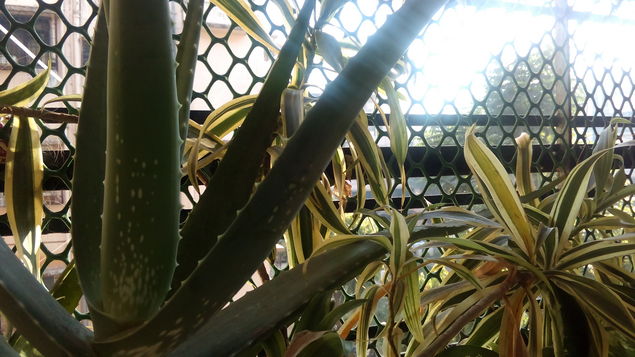 (Click for full size)
(Click for full size)As usual, Lava makes use of the unintuitive camera app from Android Gingerbread days, which doesn't blend well with the material design of Android apps these days. On top of that, quite a few functions are hidden inside and not easy to access. Looking past the camera app, the 10-megapixel camera is a fast shooter in normal mode and can capture some decent images in ideal lighting conditions. The colours were natural and there was a good amount of details as well. However, the lens does blow out the highlights. The HDR mode manages to salvage the situation somewhat but the camera is really slow to focus and capture an image in this mode. The captured 1080p video, on the other hand, does not live up to the quality of the still images. Also, in what might come as bad news for selfie lovers, the 2-megapixel front camera tends to soft focus on subjects and loses out on details in the process.
Performance
In daily usage, the Lava Iris Fuel 60 is no slouch and we could swipe through screens, open apps and perform tasks fairly easily without any holdups. However, gaming on this phone should only be limited to playing casual games as graphically-intensive games like Asphalt 8 stuttered.
In daily usage, the Lava Iris Fuel 60 is no slouch and we could swipe through screens, open apps and perform tasks fairly easily without any holdups. However, gaming on this phone should only be limited to playing casual games as graphically-intensive games like Asphalt 8 stuttered.
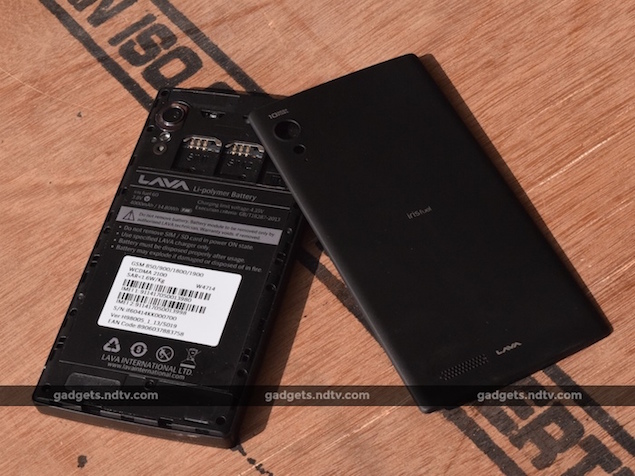
In our AnTuTu and Quadrant benchmark tests, the Iris Fuel 60 scored 17,449 and 7,134 respectively. These numbers are quite respectable. Although, in the more intensive 3D Mark Ice Storm test the phone only scored 3,134 points, which isn't too great. We tried our test videos and the Iris Fuel 60 managed to play all of them without skipping frames. The loudspeaker is adequately loud but tinny. The bundled headset is of average quality and the sound quality improves drastically if better earphones are used. The sound quality in calls is not bad but the phone did drop a few calls.
Coming to what Lava calls the piece de resistance of the Iris Fuel 60 - the battery life; it is not as good as the other phones we mentioned in our introduction. It lasted us 11 hours and 49 minutes in our video loop test, which is much lower than Intex Aqua Power's 14 hours and 11 minutes of endurance. That said, the Iris Fuel 60's battery life is much better than most other regular Android smartphones.
We also noticed that it lasts much longer than other phones in standby mode. In regular usage, the battery lasted us one and a half day on heavy usage, which should be more than enough for most people. Lava claims that using the default charger and the proprietary Quick Charge technology the Iris Fuel 60 can charge from 0 to 100 percent in 3 hours and 15 minutes. We tested this and it took us around 3 hours 27 minutes to completely charge the phone, which is pretty close to the claim made by Lava.
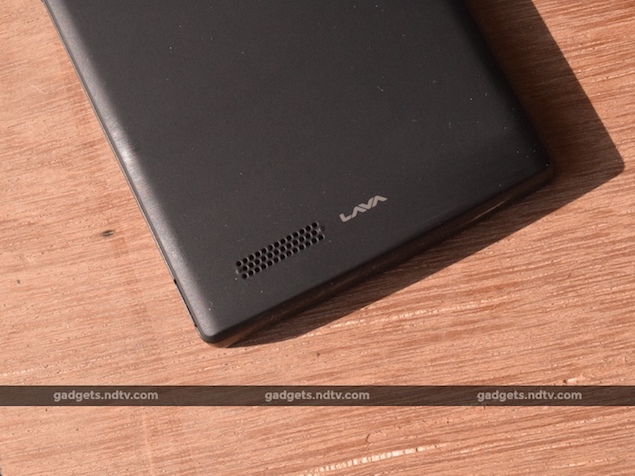
Verdict
The Lava Iris Fuel 60, as advertised, does have a good battery life but it falls short of being great. This is a bit of a letdown considering it has a massive 4000mAh battery inside. However, despite its shortcomings in ergonomics, we think that overall, the Lava Iris Fuel 60 performs well. Moreover, the 10-megapixel camera can capture decent images in ideal lighting conditions. Add to that, the asking price of Rs. 8,888 for the phone is not too bad either. There are two other options for prospective buyers to consider: the Intex Aqua Power (Review | Pictures), which is cheaper than the Iris Fuel 60, and the Gionee Marathon M3 (Review | Pictures), which has a higher capacity battery with the ability to charge other smartphones using USB OTG.
The Lava Iris Fuel 60, as advertised, does have a good battery life but it falls short of being great. This is a bit of a letdown considering it has a massive 4000mAh battery inside. However, despite its shortcomings in ergonomics, we think that overall, the Lava Iris Fuel 60 performs well. Moreover, the 10-megapixel camera can capture decent images in ideal lighting conditions. Add to that, the asking price of Rs. 8,888 for the phone is not too bad either. There are two other options for prospective buyers to consider: the Intex Aqua Power (Review | Pictures), which is cheaper than the Iris Fuel 60, and the Gionee Marathon M3 (Review | Pictures), which has a higher capacity battery with the ability to charge other smartphones using USB OTG.
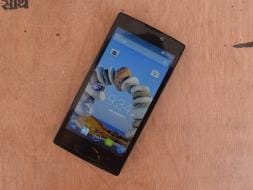
Lava Iris Fuel 60 in pictures
Oppo N3 review: Motor head
Introduction
The formula for the smartphone to top all others is the industry's elusive philosopher stone. Being complete newbies, but keen as a bean, Oppo's take is perhaps the weirdest. Yet it seems to work.
The standard ingredients include the latest chipset, a robust screen, and a high-megapixel camera. But why not try something crazy like a rotating camera that can do the best selfies in the industry? That seemed to be last year's brief. This year the module is motorized and can rotate all by itself. The camera has also seen a substantial upgrade.
Last year's Oppo N1 had a rotating 13MP camera, a 5.9" 1080p display and a CyanogenMod ROM, as an alternative to Oppo's very own Color OS. This year the camera is 16MP, the sensor and pixel size have gotten bigger but that's about it as far as bigger goes. The phone is tangibly more compact, which has a simple explanation: a slightly smaller 5.5" 1080p IPS display.
There's no CM this time but Color OS is in at version 2.0 bringing Android KitKat and this time there is no longer an app drawer.
Among the other things that make the N3 a better phone is a new chipset (Snapdragon 801 over the S600 of old) and a fingerprint scanner on the back where the O-Touch pad used to be.
Key features
- Optional Dual-SIM (micro SIM resides in microSD card slot)
- 5.5" IPS LCD display of 1080 x 1920px resolution, around 403ppi
- Android 4.4.4 KitKat with Color OS 2.0 on top
- Qualcomm Snapdragon 801 chipset, quad-core 2.2GHz Krait 400 processor, Adreno 330 GPU, 2GB of RAM
- Motorized 206-degree rotating lens, 16MP 1/2.3" sensor, Schneider Kreuznach certified, 1.34µm pixel size, dual LED flash
- 1080p video recording at 30fps and 60fps, 720p slow motion video at 120fps
- Fingerprint sensor doubling as a trackpad and button
- O-Click Bluetooth remote comes in the bundle, can control the camera and locate the device
- 32GB of built-in storage; microSD card slot
- Cat. 4 LTE (150/50Mbps); Wi-Fi a/b/g/n/ac; Bluetooth 4.0; GPS/GLONASS; microUSB, USB On-The-Go
- 3,000mAh battery with Oppo's proprietary VOOC rapid charging tech (75% battery in 30min)
Main disadvantages
- No 4K video recording yet
- Comparably large and heavy for the screen size
- QHD resolution would have been nice
- No FM radio or IR blaster (we're nitpicking because of the high asking price)
- Hard to get in brick-and-mortar stores outside of Asia
What was good about the Oppo N1 is even better here - the body is still a lovely blend of high-quality matte plastic and aluminum. The frame that runs around the phone breaks for a bit toward the bottom where a notification LED forms what Oppo likes to call Skyline Notification 2.0.
Oppo did well with the successor, building on the strengths of the N1, and ditching some of the things that were a little over the top (the huge footprint and 5.9" aren't everyone). Can Oppo finally step out of Asia with a global winner?
Well, for one, the N3 is yet to be available on the shelves of walk-in stores around the world. You do get shipping to most locations outside Asia and an international warranty to go along. But most people don't feel comfortable buying their phone from outside the country, let alone across continents.
Then there's the issue of carrier subsidies - many people get their phones on multi-year deals from their carriers without worrying about pricey upfront obligations - this isn't an option with the Oppo N3. Another thing to note is the asking price of $649, which sure looks steep. Most of the points above are valid for pretty much every smartphone to come out of China these days - few of which can match Oppo's vision and creativity.
In and of itself, the Oppo N3 is a great smartphone with a quirky but potent-looking camera propped on its forehead. As a successor, it's all an Oppo N1 user can ask for - the screen is smaller but we think it suits the device better, the chipset has seen a big improvement, and the camera (the focal point of the package) has improved the most.
OK, the N3 has our full attention. Off to unboxing and a hardware checkup after the break.
Lenovo Vibe X2 review: Rainbow of colors
Introduction
The Motorola acquisition will put even more wind in the sail of outward bound Lenovo but blockbuster smartphones carrying their own brand are needed just as much, both at home in China and internationally. The QHD Vibe Z2 Pro is undoubtedly the top-of-the range offering, but what about the midrange? The Lenovo Vibe X2 reporting for duty.
The Vibe X2 looks stunning in its layered magnesium alloy body and that's exactly the impression Lenovo was after. It's hard to get noticed in this particular segment of the market, but the Vibe X2 has nothing to worry about. The layered design of the Vibe X2 is not unlike the Jolla phone, but there's an extra layer, for a total of three, whose different colors complement each other nicely.
Underneath the flashy outfit, the Vibe X2 offers equally impressive innards. We are talking one of MediaTek's latest True8core chipsets, where four of the CPU cores are 2GHZ Cortex-A17s. The Vibe X2 offers a solid 5" IPS display of 1080p resolution too. Complete with the 13MP camera at the back, the Vibe X2 is tiptoeing close to premium territory.
But Chinese phone makers are known for offering more than the usual for the price bracket. Let's see what the Vibe X2 has to say about it.
Key features
- 5.0" 16M-color 1080p IPS LCD capacitive touchscreen
- Android OS v4.4 KitKat with Vibe UI 2.0
- Quad-core 2.0GHz Cortex-A17 and quad-core 1.7GHz Cortex-A7; MediatTek MT6595m True8Core, PowerVR G600 GPU
- 2GB of RAM
- 13MP camera with 1080p video recording @ 30fps
- 5MP front-facing camera, 1080p video recording
- 32GB of built-in storage
- LTE Cat. 4 (150Mbps), Wi-Fi a/b/g/n/ac, GPS/GLONASS receiver, Bluetooth v4.1+LE, FM Radio
- Standard 3.5mm audio jack
- Accelerometer and proximity sensor, notification LED
- Active noise cancellation with a dedicated mic
- 2,300mAh battery
Main disadvantages
- No microSD
- No NFC
- Front camera is fixed focus
- No 64GB option
- No 4K video recording although the chipset supports it
- A bit pricey
- Non-removable battery
The only other phone to be powered by this particular MediaTek chipset is the Meizu MX4. Fortunately, unlike most of its compatriots, the Lenovo Vibe X2 is more readily available outside its home market.
Riding on charm alone won't take the Vibe X2 too far and Lenovo certainly knows it. The Vibe X2 needs to click with customers on a deeper level and that's always easier said than done. At least on paper though, the phone is more than adequately powered, with things like Cat.4 LTE and 2 gigs of RAM boosting its credentials with users who value performance over looks. The option to layer on accessories is a welcome touch of novelty.
Coming up next is the usual unboxing and hardware checkup. We'll take the Lenovo Vibe X2 out of the box and see if the handling is as good as the looks. And that's just for starters. Let's go.
Subscribe to:
Posts (Atom)

















